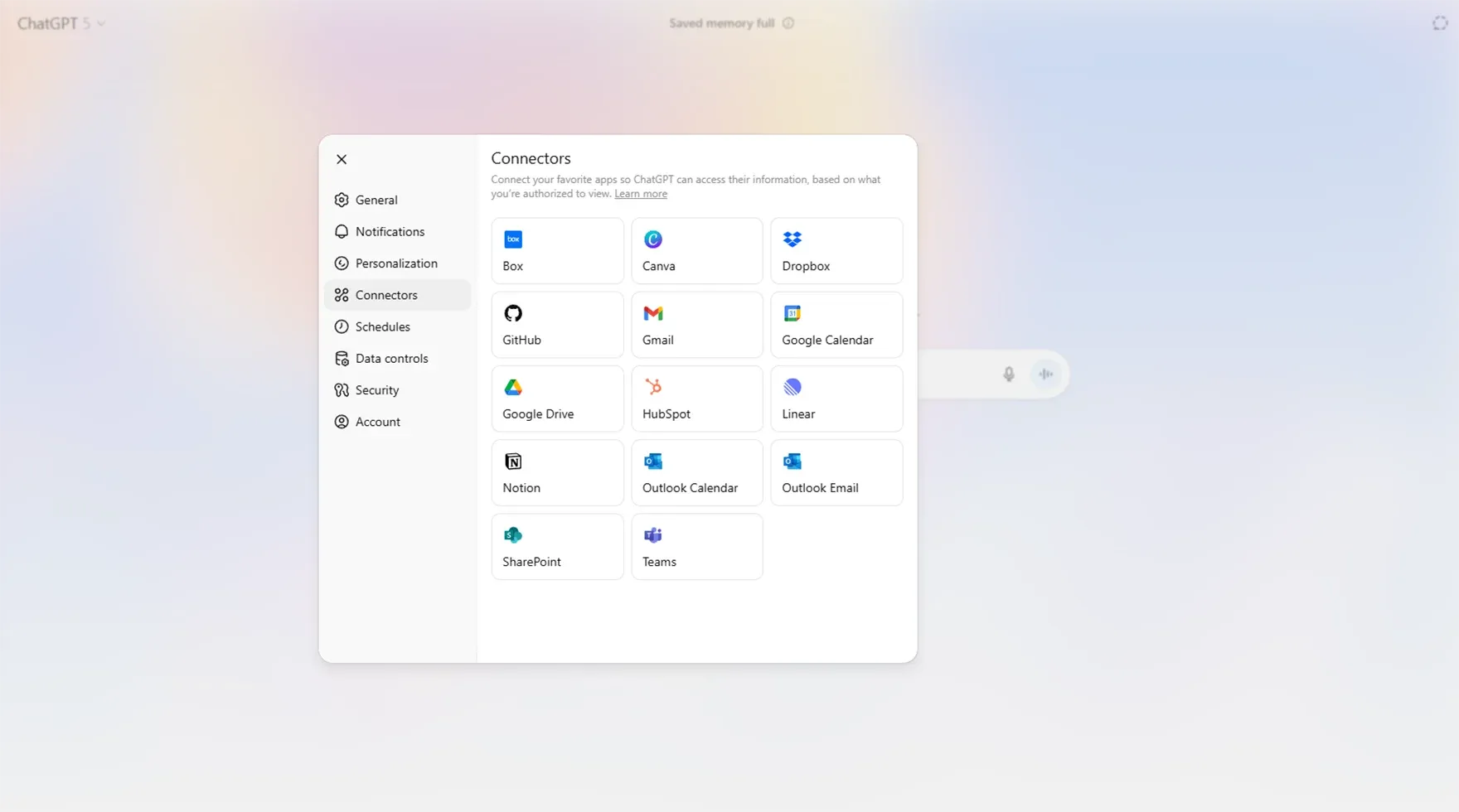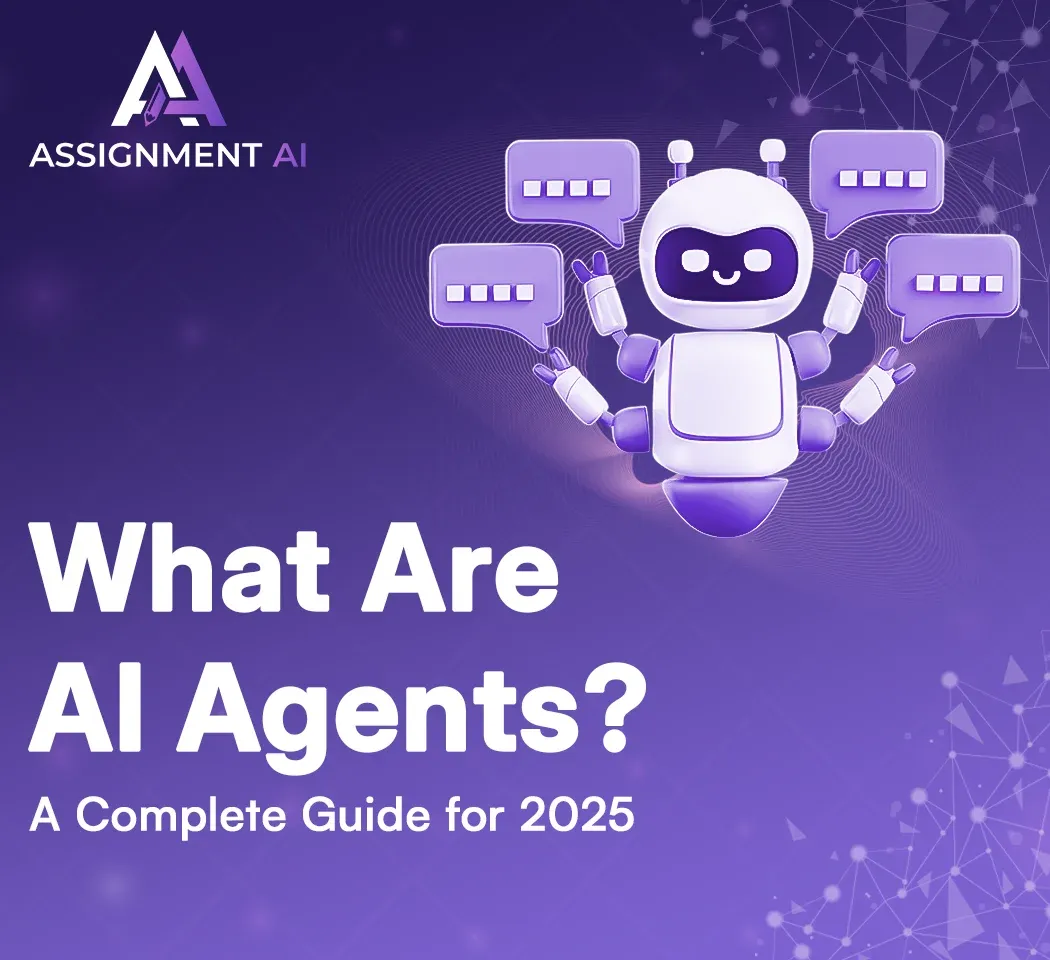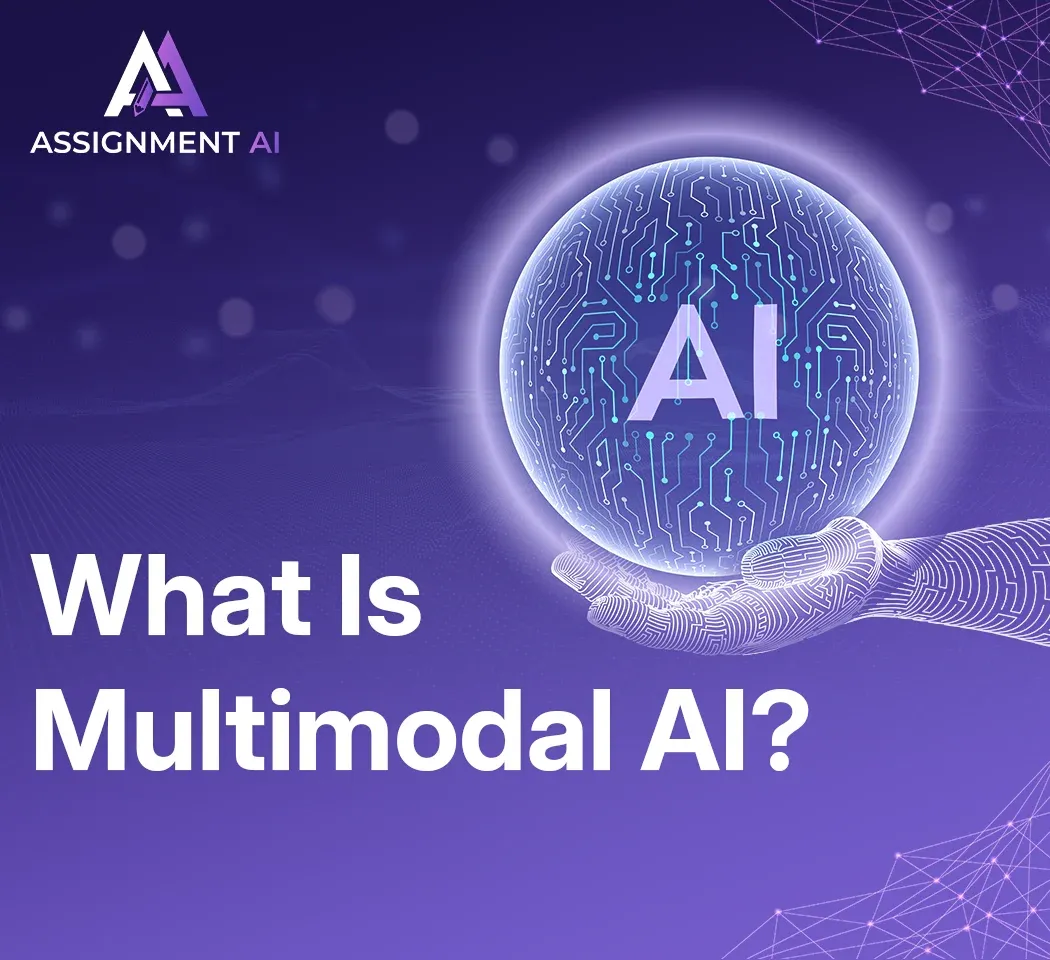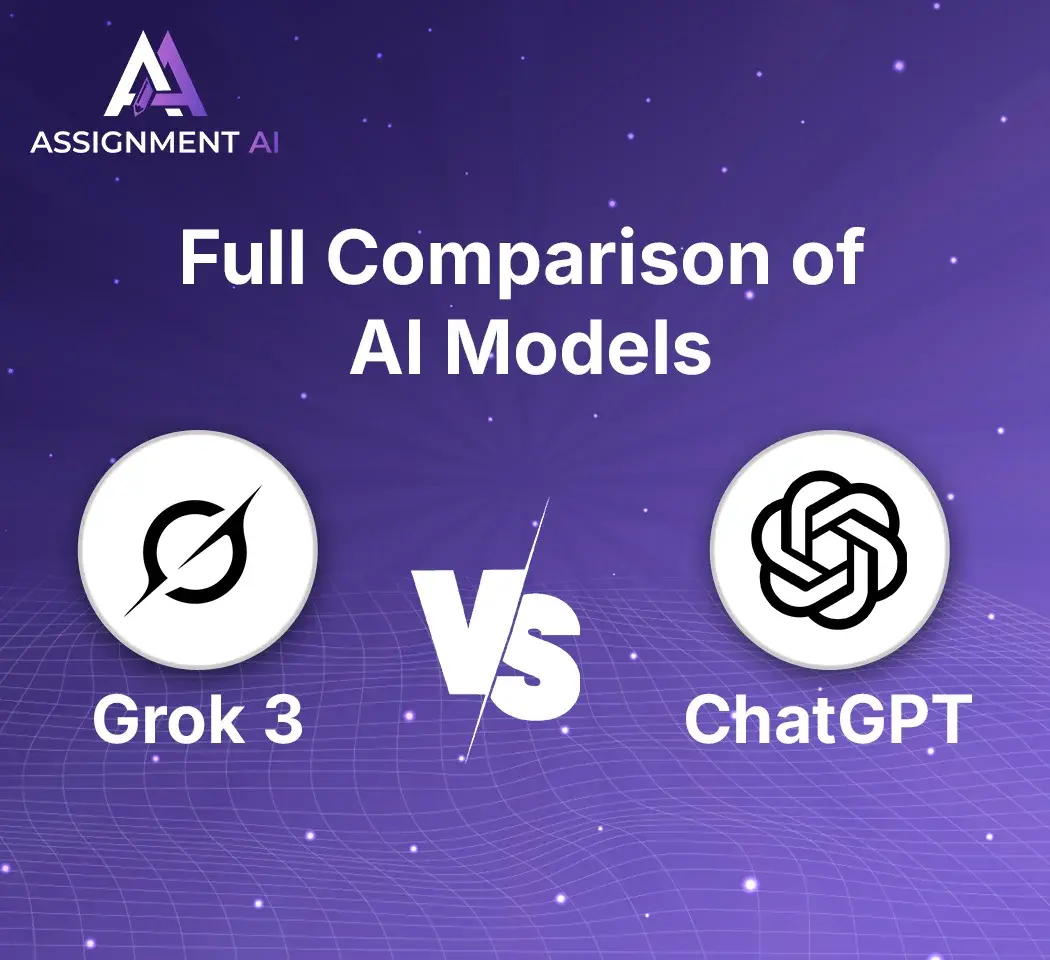AssignmentGPT Blogs
The artificial intelligence landscape has been transformed by the recent launch of GPT-5, OpenAI's most powerful language model yet. As businesses, developers, and everyday users experiment with these devices powered by AI, GPT-5 represents huge advancements in natural language processing, reasoning capability, and the application of the tool in real life. This article will cover all the information to know about GPT-5, including when it was released, the features that are cutting-edge, and how to use GPT-5 in practice.
Quick Overview
GPT-5 is OpenAI's latest flagship language model, which was officially released in late 2024 and will be available in early 2025. This new model follows on the heels of GPT-4, and has brought with it improved reasoning (both deduction and induction), reduced hallucination, longer context windows, and improved integration features. The model includes both chat-centric improvements for average users and powerful functionality aimed at developers who want to take the next step and build sophisticated AI products.
Noteworthy features include customizable chat personalities, a strong integration with popular productivity tools (e.g., Gmail and Google Calendar), advanced reasoning control for developers, and a significant reduction in the time it takes for GPT-5 to complete certain complex tasks that involve multiple steps. While the price will be comparable to previous models, the number of controls and other improvements with GPT-5 are worth the cost if you need the best AI to help you with tasks.
What Is GPT-5? How Can I Access GPT-5?
GPT-5 is the fifth-generation model of OpenAI's Generative Pre-trained Transformers that understand and generate text that feels human-read, like previous versions but now with greater accuracy and contextual awareness. GPT-5 has added advanced reasoning mechanisms that allow it to solve complex multi-step problems, maintain context in long conversations, and produce more reliable outputs.
There are many avenues for accessing GPT-5. ChatGPT Plus and Pro subscribers can instantly access GPT-5 through the same ChatGPT interface, and developers can access it via an API and use it in their applications. Users can access GPT-5 through a number of third-party integrations, making it widely available to all users with and without technical experience.
In summary for individual users, simply logging into ChatGPT with a paid subscription is all you need to do to access GPT-5. The user interface is still the same and easy for new users to navigate, what you will notice is improved quality of responses, improved response speeds, and new customization options that weren't available before.

GPT-5 Release Date
After months and months of waiting and speculation, OpenAI has officially announced its GPT-5 release date as August 6, 2025. The timing of release came quicker than many industry experts had believed or expected, with GPT-5 being launched to OpenAI's Free, Plus, Pro and Team users on Thursday of the announcement.
This schedule is very much an acceleration of prior expectation and prediction. Close sources to the company, had stated ChatGPT-5 was expected in August 2025, and OpenAI stayed true to the model. August 2025 release marks almost three years since ChatGPT initially released to the world in November 2022 as GPT-3.5.
Important Announcement Timetable
August 6, 2025: OpenAI will announce GPT-5 as the next iteration of its Generative Pre-Trained Transformer
August 8, 2025: The rollout will include all users (Free, Plus, Pro, Team).
Ongoing: Features will be added and optimized over time.
OpenAI's rollout plan different compared to other models by giving all users access at the same time including free users (with constraints on usage) from and after start date. OpenAI's strategy allowed everyone to benefit from day one of learning about capabilities of GPT-5.
OpenAI's rollout of GPT-5 is a result of pressure and competitiveness in the AI space and the confidence that OpenAI had in the safety and freeing the economic value of the model. Being able to release at scale around the globe is a major improvement for OpenAI and its capability and strategy to release in such a massive way.
New Features in GPT-5
1. Chat Features
Customize Your Chats' Color GPT-5 is expanding personalization features beyond functionality to visual personalization. Users will now have to ability to customize the color options in their chats to provide a more personalized and aesthetically pleasing experience. While this may seem mundane, it provides insight into OpenAI's commitment to user experience and customization, and the importance of interface customization in the advancement of AI tools.

2. Change Personalities
One of the most intriguing aspects is the ability to toggle between different AI personalities. Users will be able to select from several pre-defined lists of personalities, or create their own personalities for specific use cases. Do you need a business assistant who communicates very formally, a creative writing partner, or a casual conversationalist? Whatever the case, GPT-5 can switch its communication accordingly. This makes the tool that much more adaptable for varying professional and personal situations.

3. Gmail and Google Calendar Integration
The integration of GPT-5 with two of the most popular productivity tools is a huge leap forward to free and seamless AI assistance in people’s daily workflow. Gmail integration allows you to use GPT-5 to compose, edit, and manage your emails, and the Google Calendar integration allows you to schedule intelligently, summarize meetings, and manage your calendar. Integration makes the experience more cohesive without switching apps.

4. Safer and More Useful Completions
Improvements in safety in GPT-5 are better filtering of content, less biased responses, and better fact-checking abilities. The model is slowly getting better at declining inappropriate requests while offering help. Completions are also more useful and contextual, reducing the need to see multiple completions to get the desired result.
Developer-Centric Features
1. Reasoning and verbosity controls
Developers have new control over the reasoning process that GPT-5 uses, and simply how long of a response it should provide. These controls allow applications to request long explanations of reasoning for complex problems, or short answers for easier questions. This can be especially useful for educational applications, debugging, and transparency in situations where AI decision-making is pivotal.
2. Custom tools in plain text
The biggest thing that GPT-5 brings to developers from a functional perspective is the capability to create and use custom tools in the app through simple plain text descriptions. This means that non-technical people can take advantage of GPT-5's extensibility without needing to program in a complex language. Non-technical people can describe the tool, what it is supposed to do, and what inputs and outputs are expected. GPT-5 can then use that tool when appropriate.
3. Improved at Long-running, Multi-step Tasks
One of the most important advancements in GPT-5 is its improved capability for executing long-running tasks, especially when they are complex, multi-step tasks that require focus and logical progression. The model better retains context over longer responsibilities, is capable of breaking this down through logical steps or execution, and is capable of completing long-running tasks without losing track of objectives or steps.
4. Longer Context, Fewer Hallucinations
The enhanced memory, context, or window for conversation enables GPT-5 to remember and process more information in one conversation. The better training models used also mean it hallucinated less. Ultimately this has meant a huge step up in the reliability of outputs from GPT-5, especially for factual questions and longer form writing.
5. Enhanced Front-end Coding
For developers of user interfaces and web applications, GPT-5 provides significant improvements to coding capabilities. The model has greater awareness of modern web development frameworks, can generate more efficient and maintainable coding structures, and provides better suggestions on improvements for user experience. These improvements mean GPT-5 can be a true partner for frontend developers and designers alike.
What Are the Various Models of GPT-5?
OpenAI has delivered a complete line-up of GPT-5 models intended for various use cases, performance needs, and budgets. There are four models of GPT-5: gpt-5, gpt-5-mini, gpt-5-nano, and gpt-5-chat.
GPT-5 (Standard/Main Model)
The flagship GPT-5 model provides the complete inherent capabilities for general reasoning, coding, and complex problem-solving. The fully realized GPT-5, flagship for general reasoning & coding, keeps the full feature set with improved reasoning capabilities, longer context windows, and better performance across all benchmarks. This is the primary model that most users will experience through ChatGPT and is optimized for higher is better when it comes to outputs that matter even more than speed or expense.
Key Features:
- Full reasoning capabilities
- Longest context window
- Best at complex tasks
- Knowledge cut-off is September 30th, 2024, for GPT-5
- Configured for quality vs speed
GPT-5 Mini
GPT-5 Mini, a streamlined model that fills the gap between performance and cost. If you're looking for a faster, more economical option for a specific task, then GPT-5 Mini is for you. It is made for applications that require sufficient performance that can tolerate additional latency and cost.
Key Features:
- A smaller, faster version of the larger model, with reduced latency and performance degradation
- Price of only $0.25/1M input tokens and $2/1M output tokens
- Knowledge cut-off is May 30, 2024
- Good for specific tasks and tasks that require data with identified performance bounds.
- APT falls within a target balance between performance and cost.
GPT-5 Nano
GPT-5-nano is available only through the API and offers a speedier, cheaper option. GPT-5 Nano is the ultra-nano speed demon for your low-latency needs - the most slender size and speed of the GPT-5 family.
Key Features:
- Ultra-low latency and designed for real-time applications
- Costs are the cheapest option ($0.05/1M input tokens and $0.40/1M output tokens)
- API-only resource
- Knowledge cut-off is May 30th 2024 for GPT-5 nano
- Other Versions
- Its purpose is speed-critical applications
- Ideal for chatbots, fast queries, and high-volume applications
GPT-5-Chat
The non-reasoning model we use in ChatGPT is released as gpt-5-chat-latest, developed for chat interactions through the ChatGPT, interface. It is an optimized version tuned for interactions between a user and the ChatGPT interface.
**Key Features: **
- Optimized for chat interactions
- Bundled as the ChatGPT interface
- Tuned for natural conversation flow
- Distinct version from the developer-based reasoning model
- Using ChatGPT's user experience features
Model Selection Approach
These are not simply younger siblings - they have been designed to do various things. The three new GPT-5 models are intended to replace most of the OpenAI offerings, providing a cleaner and more focused model ecosystem.
When to Use Each Model:
GPT-5 Standard: Complex reasoning, research, deep understanding, creative writing
GPT-5 Mini: Balanced, medium-complexity tasks, cost-efficient solutions
GPT-5 Nano: High-volume, real-time processing, simple requests, low-cost projects
GPT-5-Chat: Conversational AI, customer support, general chat projects
The model suite offers users a wide variety of selections based on performance, speed, cost, and complexity of the task to be performed.
What is the Training Process for GPT-5?
GPT-5's training introduces new and improved machine learning methods. The model was trained on a dataset comprising of books, articles, websites, and other text sources. There are many important aspects to OpenAI's data processing and preparation for the GPT-5 training model such as data quality and strategies to reduce bias in the model. OpenAI implemented various processes in the training process including new constitutional AI training methods that align the model with human values while aiding the model in providing helpful, harmful, and honest responses.
The training method of human reviewer feedback, reinforcement learning from human feedback (RLHF), feedback that aims to increase reasoning in the model, and various approaches yield substantially better experiences with the model that is both a higher-performing model on various benchmark tests, as well as better value to human consumers in practical situations.
Pricing for ChatGPT Subscriptions
For the individual user, accessing GPT-5 through ChatGPT will work as follows:
- Free Users: All ChatGPT users will get access to GPT-5, including free users, but with some usage restrictions.
- ChatGPT Plus: $20 per month with standard usage restrictions. -** ChatGPT Pro**: $200-a-month "Pro" subscriptions allow unlimited access to the newly released system.
Pricing of the API for Developers
API pricing for GPT-5 has been established at very competitive pricing.
GPT-5 (Standard Model)
- $1.25 per million tokens of input, and $10 per million tokens for output
- Cached input is $0.125 per million tokens
GPT-5 Mini
- $0.25/1M input tokens and $2/1M output tokens
GPT-5 Nano
- $0.05/1M input tokens and $0.40/1M output tokens
Competitive Positioning
GPT-5's input cost is half because of GPT-4o, and an equivalent price to output as well, which makes it far less expensive than prior versions. It is an equivalent price to Google Gemini 2.5 Pro basic subs.
To put this into perspective, this is $1.25/million mentioned tokens (the approx. equivalent of 750,000 words, longer than the entire “Lord of the Rings” series), which makes GPT-5 incredibly cost-effective for any situation/usage.
Enterprise and Nonprofit Pricing
OpenAI provides for larger organizations:
- ChatGPT Team: Starting at $25 per user per month.
- Enterprise Solutions: Custom pricing, offering dedicated capacity and additional support.
- Nonprofit Discounts: 20% discount on ChatGPT Team ($20 per month per user with an annual plan and $24 per month per user in a monthly plan).
This aggressive pricing puts GPT-5 within easy reach of individual users, as well as enterprise customers, and provides excellent value based on the large improvements in capability and reliability.
Pros of GPT-5
The benefits of GPT-5 are extensive and plentiful. With improved reasoning abilities, it can be used for complex tasks in all areas of life, such as scientific research, medical diagnostics, and business strategy. With its lower hallucination rate, it will make it more trustworthy for factual tasks and workplace projects.
The better integrations improve workflows and productivity; customization can mold the user experience to each user's specific context. A longer context window allows for complex conversations and confusion, as well as better management of intricate documents and tasks.
For developers, improved developer capabilities and custom tool integrations offer new and exciting opportunities in building AI applications. Given the myriad benefits of GPT-5, it is a major improvement or upgrade for casual users and professional developers alike.
Cons of GPT-5
Despite the advances made, GPT-5 does have a few drawbacks. The increased computing costs would be a downside to the most frequent users as they will get charged for their additional costs, and some of the new features come at the expense of time for investing in learning new user interfaces and workflows. Hallucination has been lessened, but not removed, and users still have to be careful if using it for a critical application.
Sometimes, there might be a strong enough intimidation factor in the new features that some casual users might run away from deploying them. The technical capabilities and flexibility are excellent, but sometimes will require considerable investment in configuration and setup that every user will invest the time to do. And as is the case with all AI models, there is a cutoff for data in training, which will limit how much they know about more recent events.
Conclusion
GPT-5 is a landmark in the field of AI and represents improved value for users and developers alike. The combination of better reasoning, less hallucinations, more improved integrations, and a fantastic array of customized features makes it hard to ignore as an upgrade from prior versions.
There are important considerations with any price or complexity but it is hard to argue the benefits of GPT-5's advanced features outweigh these for the vast majority of users. As the world of AI continues to develop and be integrated into everyday workflows, GPT-5 will offer a compelling solution for those looking for reliable power and flexibility.
The next generation of AI interaction is here with GPT-5, and the adopters are discovering countless ways to improve productivity, creativity, and problem-solving in nearly every conceivable area.
FAQs
1. Will GPT-5 be available to free users?
2. How much was GPT-5 better than GPT-4?
3. Can I use GPT-5 for commercial projects?
4. What programming languages does GPT-5 support?
5. How do I get access to the new integration features?
Content writer at @AssignmentGPT
Rashi Sharma is a content writer who helps brands put their thoughts into words. She creates blogs, website content, and brand stories that are easy to understand and feel genuine. Her writing style focuses on keeping things clear and making sure the message connects with the right people.
Master AI with
AssignmentGPT!
Get exclusive access to insider AI stories, tips and tricks. Sign up to the newsletter and be in the know!

Transform Your Studies with the Power of AssignmentGPT
Empower your academic pursuits with tools to enhance your learning speed and optimize your productivity, enabling you to excel in your studies with greater ease.
Start Your Free Trial ➤Start your success story with Assignment GPT! 🌟 Let's soar! 🚀
Step into the future of writing with our AI-powered platform. Start your free trial today and revolutionize your productivity, saving over 20 hours weekly.
Try For FREE ➤








